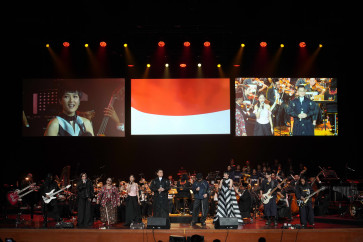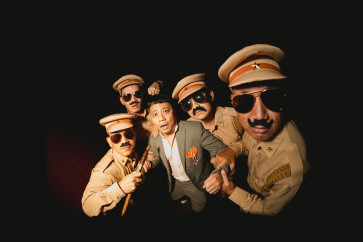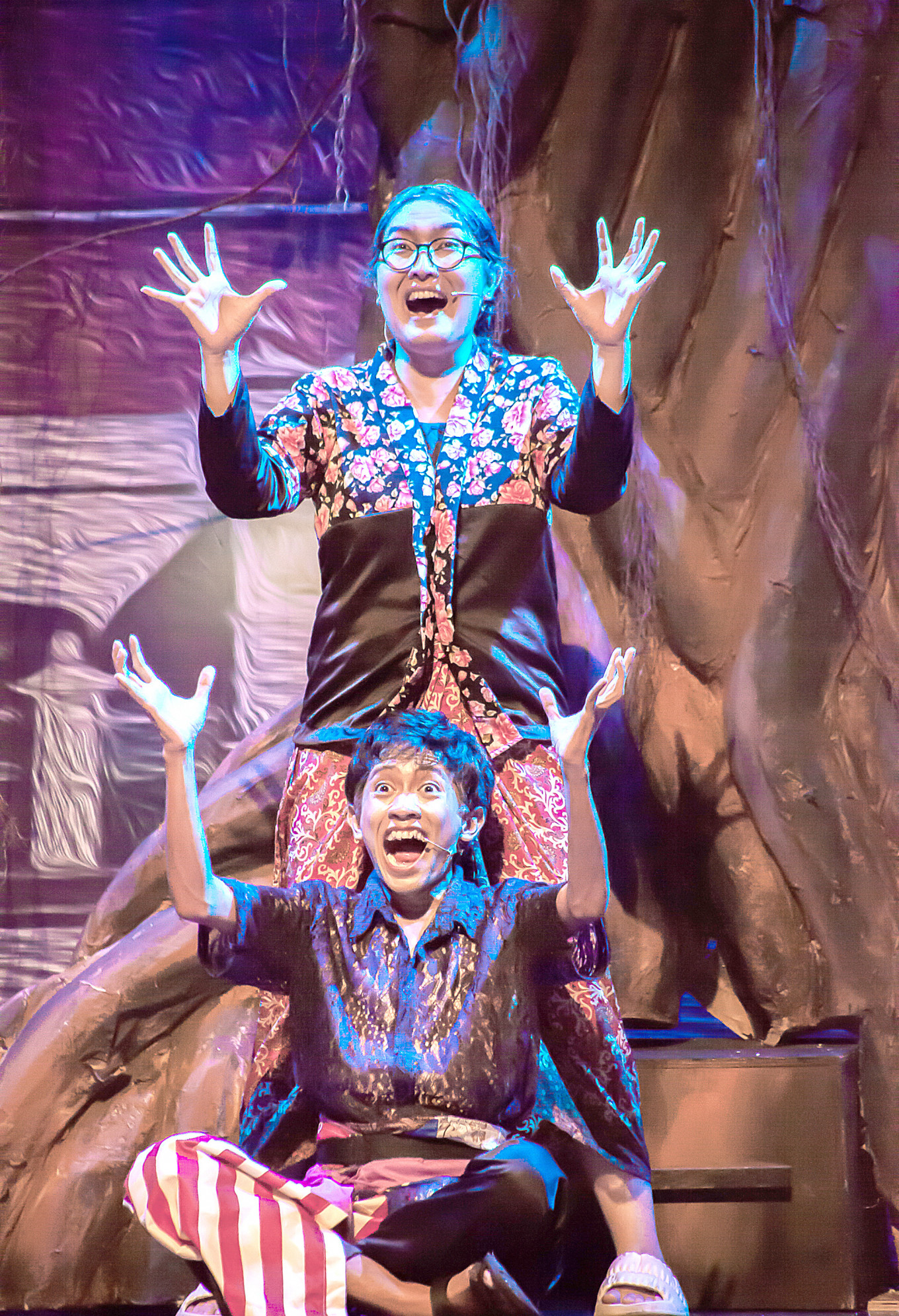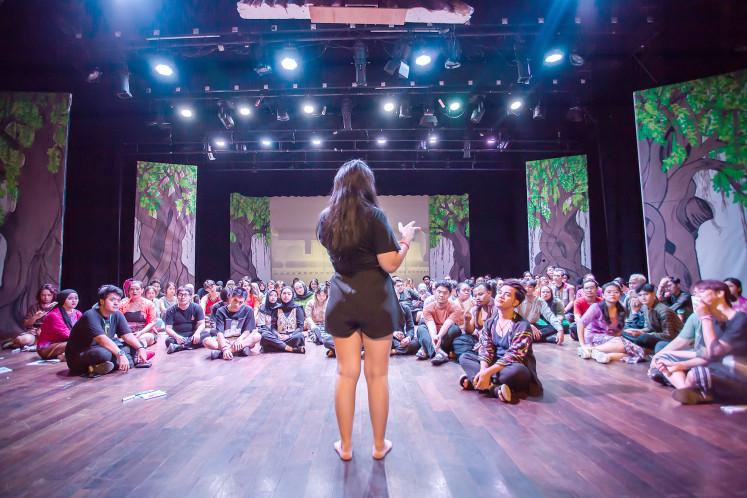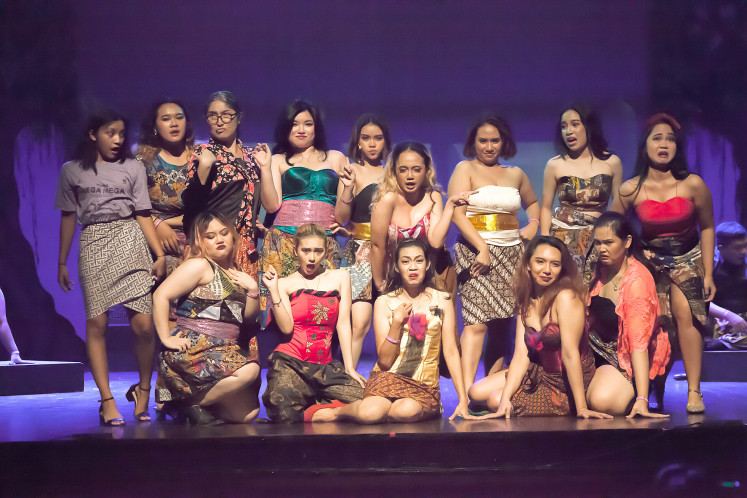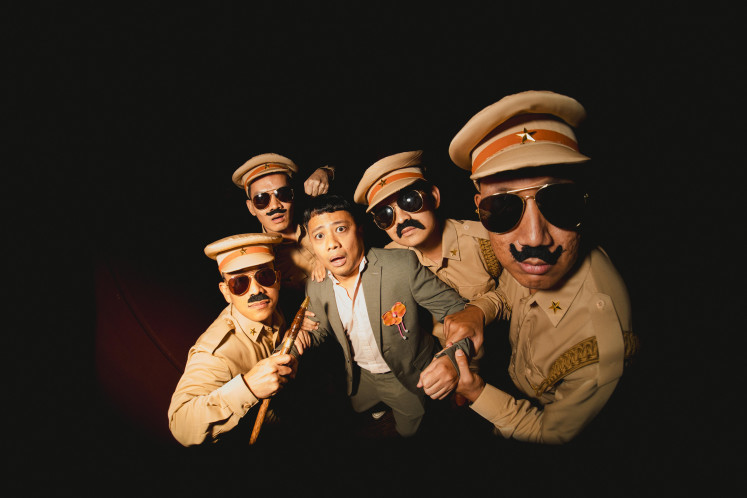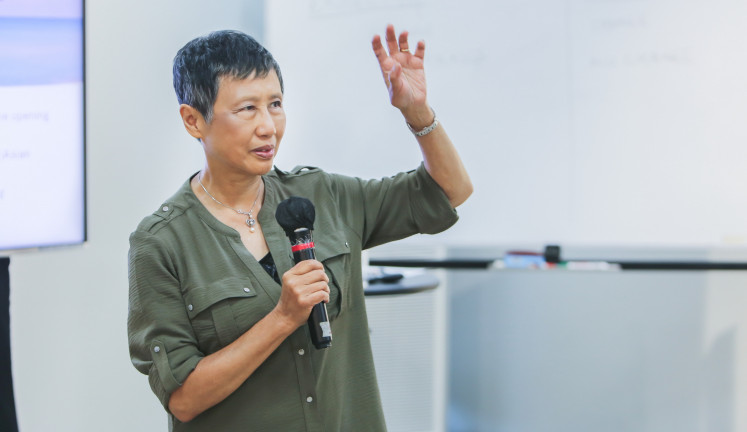Protagonists Ma’e (standing) and Koyal mirror each other’s vivid expressions in a pivotal scene from Teater Keliling’s Mega Mega musical
I’ve always been fascinated by theater and by extension, musicals.
Whether it's dramatic plays that rely on clever dialogue like Agatha Christie’s long-running The Mousetrap, or energetic musicals that leverage witty lyrics like Hamilton, there’s something magical about watching a story unfold through a live performance.
The cast in Teater Keliling’s fresh rendition of Arifin C. Noer’s Mega Mega, in my humblest of opinions, perfectly captures the essence of that magic in a package that is at once hilarious, moving and deeply rooted in Indonesian culture.
Teater Keliling dates back to 1974, making it one of the country’s oldest theater communities. Since its inception, the troupe has toured far and wide and earned critical acclaim for its performances in Australia, Egypt, South Korea and Germany, to name a few.
The special showings of Mega Mega on Feb. 24 and 25 were especially poignant, marking the theater company's 50th anniversary with a contemporary revival of its inaugural production. Originally a surrealist drama, Teater Keliling reimagined the play as a musical, cleverly transforming the script into songs.
“As we approach half a century of theater, we asked ourselves, what do we want to make? And we thought, ‘What if we did the first-ever script that Teater Keliling used?’” cofounder Rudolf Puspa told me before the press show on Friday, Feb. 23.

Thank you!
For signing up to our newsletter.
Please check your email for your newsletter subscription.
Dery Syrna, Rudolf’s wife and the troupe’ cofounder, added that Mega Mega was a perfect fit because of its timelessness.
Teater Keliling director Rudolf Puspa (left) and his producer-playwright daughter Dolfry Indra Suri. (Courtesy of JP/Okky Ardya)
Add to that a cast of young blood, and they had a recipe for success. After all, the first generation of Teater Keliling performed Mega Mega a total of 157 times across Indonesia, Singapore and Malaysia.
Set in the city of Yogyakarta, the musical recounts the tale of six characters that all share the struggle of poverty: the stoic Tukijan, the sarcastic Hamung, the aloof Panut, the boisterous Retno, the motherly Ma’e and the goofy Koyal.
The six leads combined offer a kind of wholesome family dynamic as each shine in particularly touching moments, cleverly used to highlight issues of classism, poverty and sexism in Indonesia.
For me, Retno was the standout, perhaps because she was portrayed as a loud and abrasive woman. While this served a comedic purpose, the audience was also privy to the reason behind her temperament: a tragic past involving domestic abuse.
Another personal favorite was Koyal, who was portrayed very cartoonishly with explosive physicality and an immensely childlike demeanor. But during dramatic moments, he switched to a child having a tantrum, infusing his performance with profound emotional depth.
This seesawing between comedy and tragedy was expertly handled, with each lead having sufficient time to flesh out their characters, making them three-dimensional and layered, instead of opting for cheap laughs and easy tears.
The cast of Teater Keliling’s Mega Mega goes over their final notes before a press showing on Feb. 23. (Courtesy of JP/Okky Ardya)
Even the supporting cast members carried out their tasks flawlessly. Many of the best jokes and indeed, many of the most moving moments, came from the auxiliary characters, elevating the musical and accentuating the leads with their own, equally passionate performances, along with a lot of improvisation that used audience participation to hilarious effect.
And this is just the acting. I haven’t even talked about the brand-new, original music that the cast members composed themselves.
The production smartly used different genres of music to best suit the different characters of the six protagonists. Koyal’s musical numbers used hip-hop and rap, while Ma’e had sweeping ballads that tugged on the heartstrings.
Complex choreography complemented the singing to complete the musical numbers, bouncing seamlessly between urban, traditional Indonesian and contemporary styles between songs.
Even the lighting was synced expertly to some of the choreography, elevating the impact of the whole experience.
If it seems like I'm gushing, that's because I am. Judging by the gasps from the audience, I wasn't the only one impressed.
Members of the supporting cast deliver a truly gut-wrenching performance as sex workers in Mega Mega, the musical. (Courtesy of JP/Okky Ardya)
Beyond the production’s technical elements, I must applaud Teater Keliling for navigating the play’s heavy themes and mature subject matter. A pivotal storyline revolves around Retno's profession as a sex worker, which means the supporting characters around her are also sex workers.
Initially, the musical used this for comedic effect, leveraging the shock value of these promiscuous characters for humor. Granted, it was pretty funny, with the actresses improvising the delivery of gut-wrenching lines.
However, what truly captivated was how Mega Mega shifted the perspective, deftly highlighting the grim realities of this industry instead.
In one scene, the lights went out and a contemporary dance sequence ensued. This, I surmise, was meant to represent the abuse the women go through, and was especially haunting, marking a complete tonal shift in the show.
This was followed by a scene where a sex worker confides to her colleagues that she is HIV positive, leading to a dramatically intense conflict between the sex workers and the men who frequent them.
I'm emphasizing these scenes because they perfectly represent how the show travels the fine line between comedy and tragedy. Moreover, Teater Keliling also shines a spotlight on the very real struggles depicted in the musical.
At the core of the story are the six main characters who are victims of circumstance, thrust into a disheartening existence. Mega Mega sheds light on the societal issues at play and asks its audience to reflect on why Indonesia is like this.
If you can’t tell already, I had an amazing time watching the show. I laughed, I gasped and I ended the night pondering my life.
What Teater Keliling has created to celebrate its 50th anniversary is truly a triumph, and if it ever decides to perform the Mega Mega musical again, clearing your schedule is an absolute must.
This article is part of The Weekender, which comes out on the Saturday edition of The Jakarta Post. It offers a variety of lifestyle and culture articles aimed at enriching your reading experience. Subscribe
here to get access to the Saturday edition and all other premium content from the Post.




